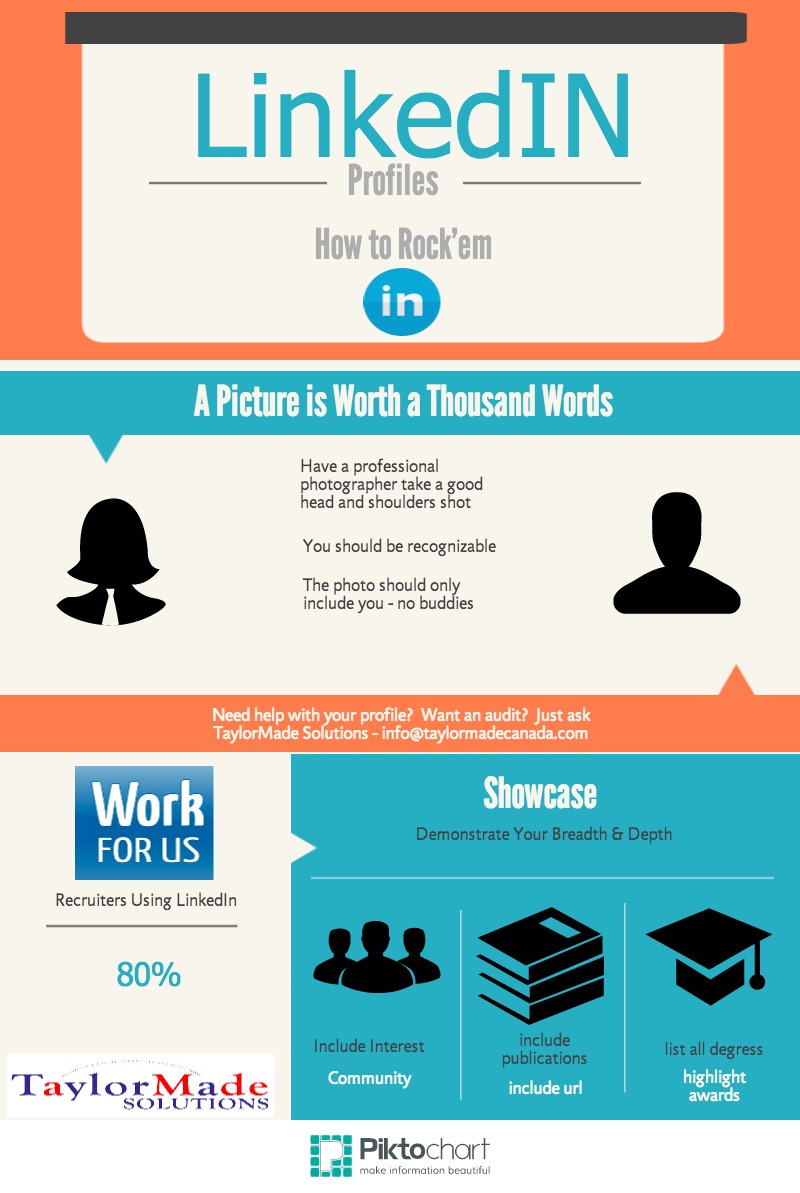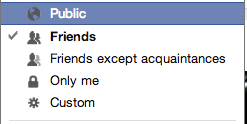


LinkedIn continues to grow in popularity and is used by more recruiters than any other tool right now. While you might not be looking for a job, you might want to use LinkedIn to enhance and maintain your personal brand. But the question is: where do I start? Or, I have a profile, but don’t seem to be getting anywhere, what am I doing wrong? Here are 10 ways to avoid looking silly on LinkedIn:
Be sure to put substance in your profile. Don’t just list your employer. Actually give context about “what” you do and “what” you are responsible for. Don’t be afraid to show some of the professional interests that you have.
I have to admit that practitioners find this odd when people do this. This is your profile. You own it and maintain it. I don’t know many people who speak about themselves in the third person when having a normal conversation. So, the question is, why in the world would you choose to do that with your LinkedIn Profile? Advice: don’t. It is that simple.
Like connection requests, giving LinkedIn Recommendations should be carefully considered. Remember, Recommendations are public and visible on your profile as well as the profile of the person for whom you have written the recommendation. Sure you can manage visibility, but why bother giving a recommendation if you aren’t willing for it to be public. You have to manage and develop your personal brand. That being said, not giving anyone a recommendation also sends a message and not a good one.
Depending on your contacts and your network, the level of sharing will vary. It is important to remember that LinkedIn is not like Twitter or Facebook. Sharing one or two really good pieces of content/advice a day would be more than appropriate. I only share a couple of pieces of content per week, but tend to like or comment more on the content shared by others.
In addition, LinkedIn is not the place to share what you had for dinner, where you are going on holidays, etc. Remember that this is a professional networking site. Keep it professional.
Groups are a great source to make connections and learn from others. It is important to join groups that you have some interest or connection with. Be sure to contribute to the conversation when you have something to add. Don’t use it as a source to spam people with your services and/or products. It is also important to be professional.
Some practitioners might disagree with me on this one, but this is not Facebook. Why in the world would you show your birthday on a professional network? Are you looking for birthday wishes? Do you really want that level of personal detail available to your entire network, the public and possibly recruiters?
Choosing whom to connect with is something that people should give great consideration. Different people have different criteria for who they accept when new people reach out to them. Some for example, will only accept LinkedIn connections from people that they know well and are in their respective industry.
Others, including myself, will accept LinkedIn connections from people in my industry as long as they are connected to other people I know. I do not connect with individuals whom I don’t know and there is no obvious connection. I also don’t accept connection requests from people who either don’t have a photo of themselves and/or it is a logo or some other odd image.
One of the greatest pet peeves that I have, and I know that others feel this way too, is having someone ask to connect with me and then when I do, they start spamming me with:
I did not accept your connection to be bombarded with requests or sales pitches. If you want to ask a question or have a conversation, that is one thing. The action or reaction you will likely get from me is a disconnection.
Ensure that you actually have a photo for your profile. You should even go one step further and have a professional photo. The photo should only be of you and not you and your significant other and/or a buddy. This is YOUR professional profile.
Remember that this is a public profile and someone will call you out for using a more important title and/or claiming that you had a team of 50 professionals reporting to you when you in fact had no direct reports.
Of course there are other things you should/should not do. And, if you still have questions, let me know.
Not everyone is recovering from Christmas Day or enjoying Boxing Day, so this is a great time to look at your social media profiles. It is an even better time to update your profiles so that they are top-notch for 2014. Here are 20 updates that you can do this week:

These are just some tips for improving your profiles. They don’t take long, so why not use this “quieter” time of year to update your profile. You will have a head start on the New Year!
People Ask Me: What Social Network Should I Use?
Which network or networks should I choose? Facebook, Twitter, LinkedIn, Google+? By far this is the question that I am asked the most, and understandably so. It can be quite daunting to look at all the different networks, existing and emerging, and wonder which one should I use.
Let’s start by looking at Twitter.
So, who is using Twitter anyway? Well, the data would say that a lot of people from different backgrounds are using Twitter. There are over 500 million active users generating more than 340 million tweets daily. (Thanks Wikipedia). Everyone from kids, to actors, to politicians are on Twitter. It is used for both personal and professional communications. However, let’s break that down a bit more.
According to information from mediabistro.com, more women than men are using Twitter. I have to confess that this tidbit surprised me. Not surprising however, is that people between the ages of 25-54 when combined make up the largest group of users. Twitter has typically attracted an older demographic, although Facebook has seen a shift in the last few years to users over 55 jumping on that channel to communicate, but I digress. We will look at Facebook next time.
Here are just 7 reasons to use Twitter and if you like communicating in 140 characters, it might just be for you:
1. Networking – What a great way to connect with people that have similar interests as you. Perhaps it is based on wanting to meet people and learn from them about a hobby or your chosen profession.
2. Research – Whether you are researching your next Smartphone or doing market research, Twitter can yield great results.
3. News – You are a news junkie and want the latest and greatest coming at you all the time and as it happens in succinct messages.
4. Job Hunting – Whether you are looking for an employee or looking to be hired, you can use Twitter to gather a lot of intelligence. Employers for example, often tweet about open positions.
5. Customer Service – In our socially connected world, it can be a lot quicker and more efficient to initiate contact with a company through its Twitter handle. Additionally, it can be a lot more convenient for you.
6. Advice or Opinions – Looking for a good book to read? Or, want to know what camera they would buy if in the market? Reach out to your network. They are valuable resources.
7. Branding – Again, whether you are working on your personal branding plan or executing a branding plan for your employer, Twitter is an excellent tool for this purpose.
This is really just scratching the surface when it comes to using this great communication tool. If you are looking to write longer more detailed communications, other networks might be better for you. Twitter is fast, efficient, entertaining and fun. It is a great way to share information that is short and to the point.
Need more advice? Want to know how to get started and what you should Tweet? Check out: How Do I Know What to Tweet
